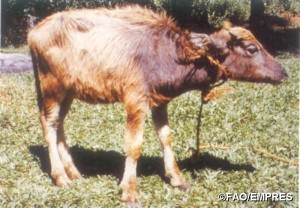State health and agriculture officials said today that seven recent cases of salmonellosis in Minnesota have been linked to raw, frozen, breaded and pre-browned, stuffed chicken entrees.
 The illnesses prompted health officials to remind consumers that the products may look cooked, but are in fact raw and should be handled carefully to avoid cross-contamination in the kitchen and then always cooked thoroughly.
The illnesses prompted health officials to remind consumers that the products may look cooked, but are in fact raw and should be handled carefully to avoid cross-contamination in the kitchen and then always cooked thoroughly.
Investigators from the Minnesota Department of Health (MDH) and the Minnesota Department of Agriculture (MDA) determined that the illnesses occurred in two separate outbreaks, involving two different strains of Salmonella bacteria in products from two distinct, unrelated producers.
In the first outbreak, four illnesses occurring from April 5 through June 8 were linked to Barber Foods Chicken Kiev. This product has a U.S. Department of Agriculture (USDA) stamped code of P-276. This product is sold at many different retailers, including grocery store chains. The four cases in this outbreak ranged in age from 19 to 82 years, all from the metro area, and two were hospitalized.
In the second outbreak, three people got sick from May 9 to June 8 after eating Antioch Farms brand Cordon Bleu raw stuffed chicken breast with a U.S. Department of Agriculture stamped code of P-1358. This product is sold at many different grocery store chains. The three cases were all adults in their 30s and 40s from the metro area, and two were hospitalized.
 With these two outbreaks, there have now been nine outbreaks of salmonellosis in Minnesota linked to these types of products since 1998. “These chicken products are raw, breaded and pre-browned and often found near pre-cooked products at the grocery store, so even though the current labels state that the product is raw, consumers could mistakenly think the product is pre-cooked,” said Carlota Medus, epidemiologist for the Foodborne Illness Unit at MDH. Improvements were made to the labeling of such products in 2008, but three outbreaks have occurred from eating the raw, stuffed chicken products since 2014.
With these two outbreaks, there have now been nine outbreaks of salmonellosis in Minnesota linked to these types of products since 1998. “These chicken products are raw, breaded and pre-browned and often found near pre-cooked products at the grocery store, so even though the current labels state that the product is raw, consumers could mistakenly think the product is pre-cooked,” said Carlota Medus, epidemiologist for the Foodborne Illness Unit at MDH. Improvements were made to the labeling of such products in 2008, but three outbreaks have occurred from eating the raw, stuffed chicken products since 2014.
“Another problem is that consumers could accidentally contaminate their hands and kitchen surfaces prior to cooking,” Medus said. “Since these products are pre-browned and often cooked from the frozen state, they may appear safer when handling than other raw meats that may be noticeably dripping juices.”
According to the U.S. Department of Agriculture’s Food Safety and Inspection Service (FSIS) the products the illnesses may be associated with appear to be ready-to-eat, but are in fact raw and need to be fully cooked before consumption. Frozen, raw, breaded and pre-browned stuffed chicken products covered by this alert and similar products, may be stuffed or filled, breaded or browned.
The only way to confirm that raw poultry products are cooked to a temperature high enough to kill harmful bacteria is to use a food thermometer that measures internal temperature, http://1.usa.gov/1cDxcDQ. Additionally, keep raw poultry away from other food that will not be cooked. Use one cutting board for raw poultry and a separate one for fresh produce and cooked foods.
 PIMS spokesperson Dr Ayesha Isani said around 185 kids suffering from diarrhea were brought to the hospital’s emergency department at around 10am in the morning. Sixty of them were admitted due to their serious condition while the rest were discharged after preliminary treatment. Ten children were still admitted to the hospital when this report was filed on Sunday evening.
PIMS spokesperson Dr Ayesha Isani said around 185 kids suffering from diarrhea were brought to the hospital’s emergency department at around 10am in the morning. Sixty of them were admitted due to their serious condition while the rest were discharged after preliminary treatment. Ten children were still admitted to the hospital when this report was filed on Sunday evening.









